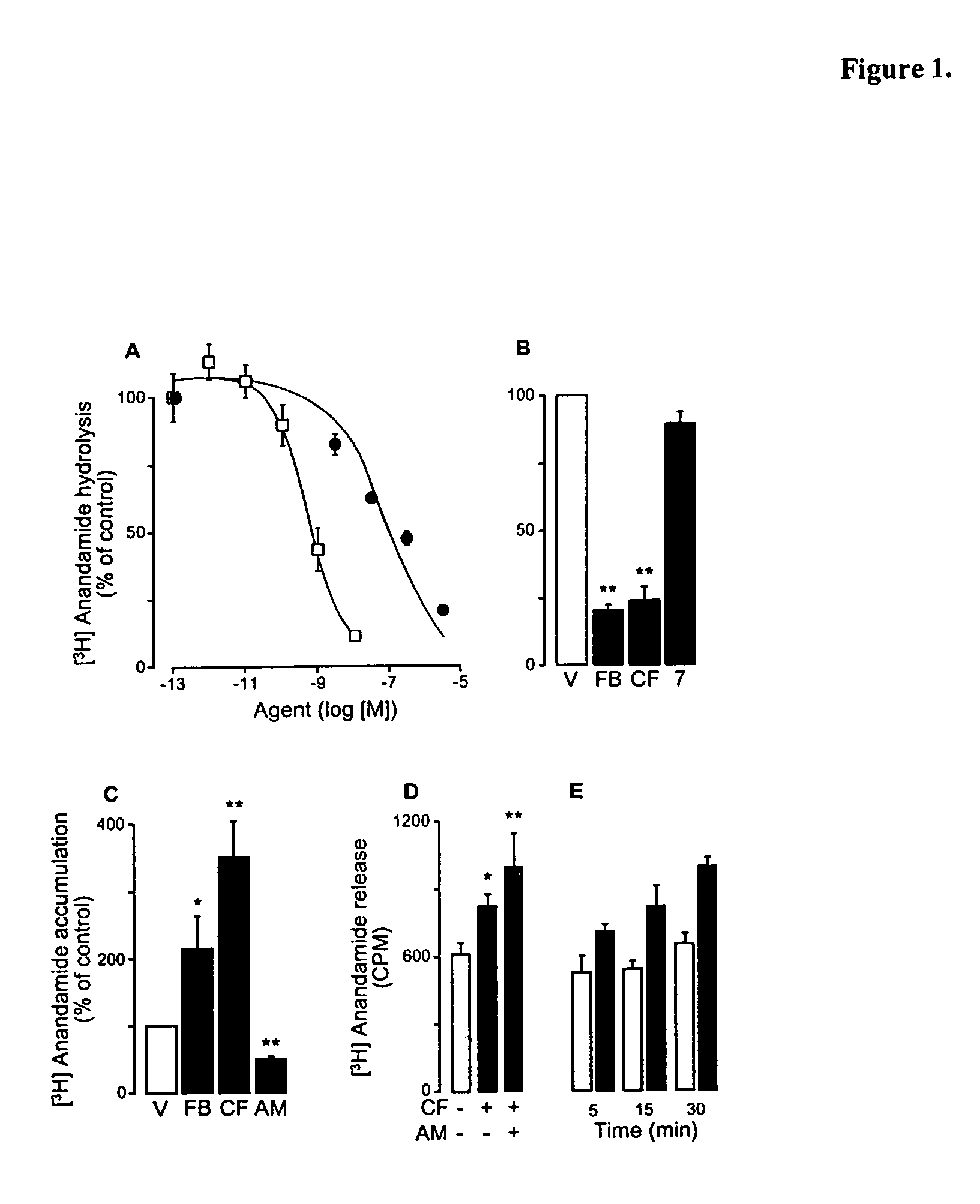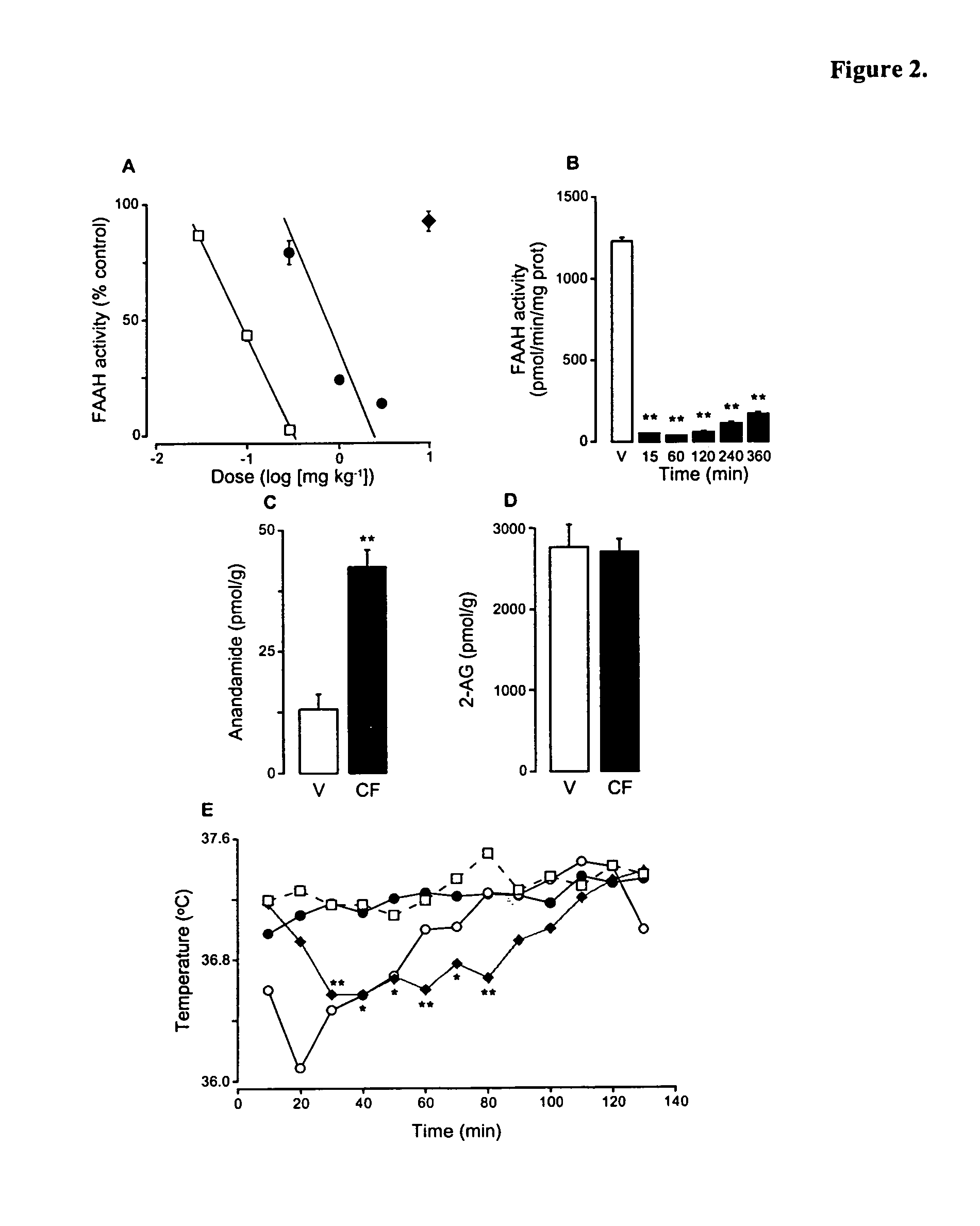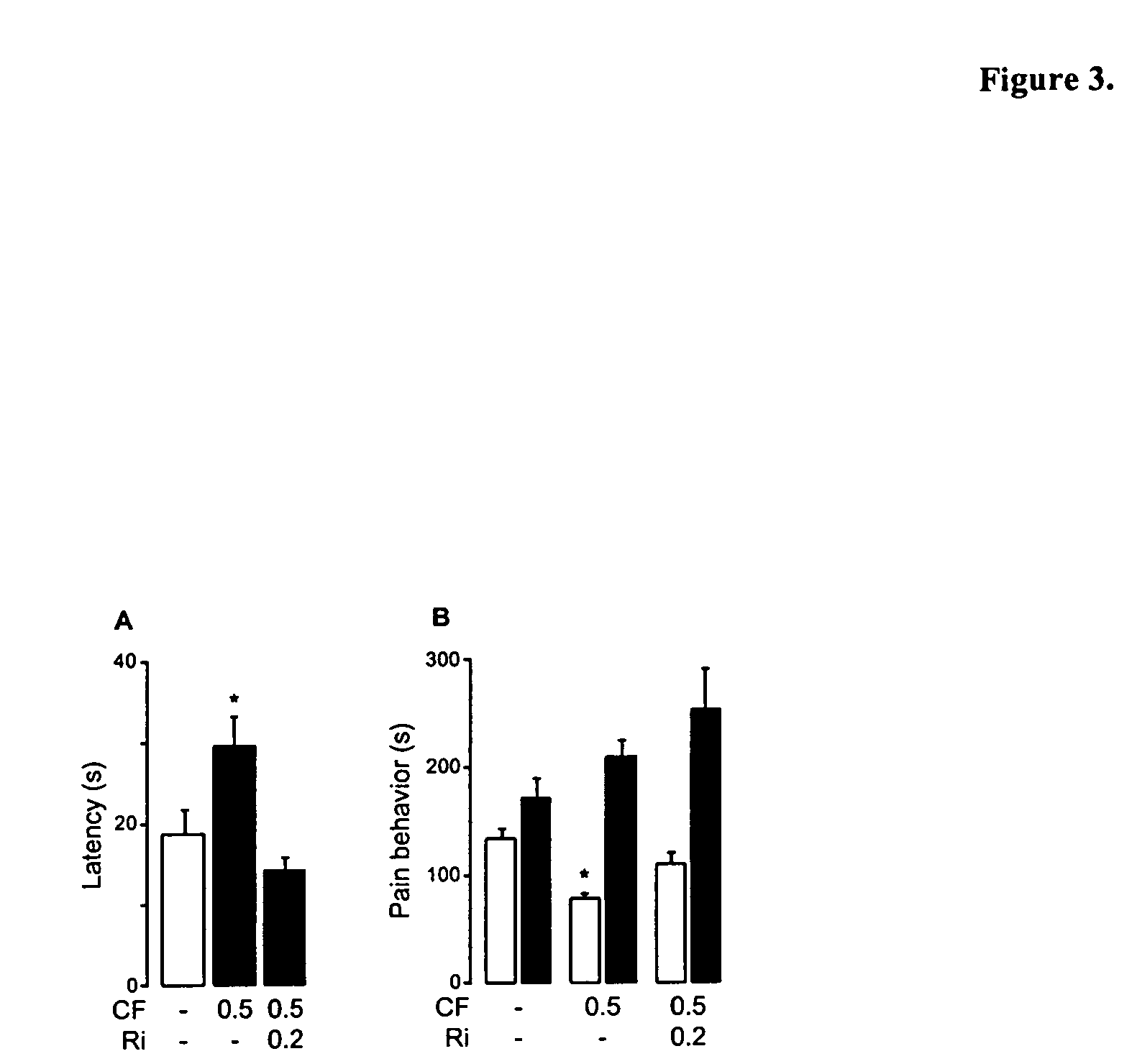Modulation of anxiety through blockade of anandamide hydrolysis
anandamide hydrolysis and anxiety technology, applied in the field of anxiety modulation through blockade of anandamide hydrolysis, can solve the problems of limiting the quality of life, affecting appetite, affecting mood, thinking, behavior and physiology, and affecting the quality of life of patients, so as to reduce anxiety, reduce pain sensitivity, and not induce hyperphagia or affect appetite.
- Summary
- Abstract
- Description
- Claims
- Application Information
AI Technical Summary
Benefits of technology
Problems solved by technology
Method used
Image
Examples
example 1
Subjects
[0271]We used male and female Wistar rats (200-350 g) and male Swiss mice (20 g). All procedures met the National Institutes of Health guidelines for the care and use of laboratory animals, and those of the Italian Ministry of Health (D.L. 116 / 92). We prepared primary cultures of cortical neurons from 18-day-old Wistar rat embryos, and maintained them as described (Stella, N. et al., Eur. J. Pharmacol., 425, 189-196 (2001)); we purchased human astrocytoma cells from American Type Culture Collection (Manassas, Va.).
example 2
Chemicals
[0272]Anandamide and related lipids were synthesized in the laboratory (Giuffrida, A. et al., Anal. Biochem., 280, 87-93 (2000)). SR141716A (rimonabant) was provided by RBI (Natick, Mass.) as part of the Chemical Synthesis Program of the National Institutes of Health; AM404 was from Tocris (Avonmouth, UK) and other drugs from Sigma (St. Louis, Mo.). All chemicals necessary for the preparation of inhibitors were from Aldrich.
example 3
Synthesis of Inhibitors
[0273]n-Butylcarbamic acid 4-benzyloxyphenyl ester (UCM532) (4) and 4-fluorophenylcarbamic acid 4-benzyloxyphenyl ester (8) were obtained by treatment of 4-benzyloxyphenol with n-butylisocyanate, and 4-fluorophenylisocyanate, respectively, with a catalytic amount of triethylamine in refluxing toluene. Similarly, cyclohexylcarbamic acid biphenyl-3-yl ester (5), cyclohexylcarbamic acid 5-phenylpentyl ester (7), and cyclohexylcarbamic acid 3′-carbamoylbiphenyl-3-yl ester (UCM597) (6) were synthesized by reacting cyclohexylisocyanate with 3-phenylphenol, 5-phenylpentan-1-ol, and 3′-hydroxybiphenyl-3-carboxylic acid amide, respectively. The latter reactant was prepared as follows: 3-bromobenzoic acid amide, obtained by reaction of 3-bromobenzonitrile and sodium perborate, was coupled with methoxyphenylboronic acid to give 3′-methoxybiphenyl-3-carboxylic acid amide, which was hydrolized with BBr3 to generate the desired 3′-hydroxybiphenyl-3-carboxylic acid amide.
[02...
PUM
 Login to View More
Login to View More Abstract
Description
Claims
Application Information
 Login to View More
Login to View More - R&D
- Intellectual Property
- Life Sciences
- Materials
- Tech Scout
- Unparalleled Data Quality
- Higher Quality Content
- 60% Fewer Hallucinations
Browse by: Latest US Patents, China's latest patents, Technical Efficacy Thesaurus, Application Domain, Technology Topic, Popular Technical Reports.
© 2025 PatSnap. All rights reserved.Legal|Privacy policy|Modern Slavery Act Transparency Statement|Sitemap|About US| Contact US: help@patsnap.com



